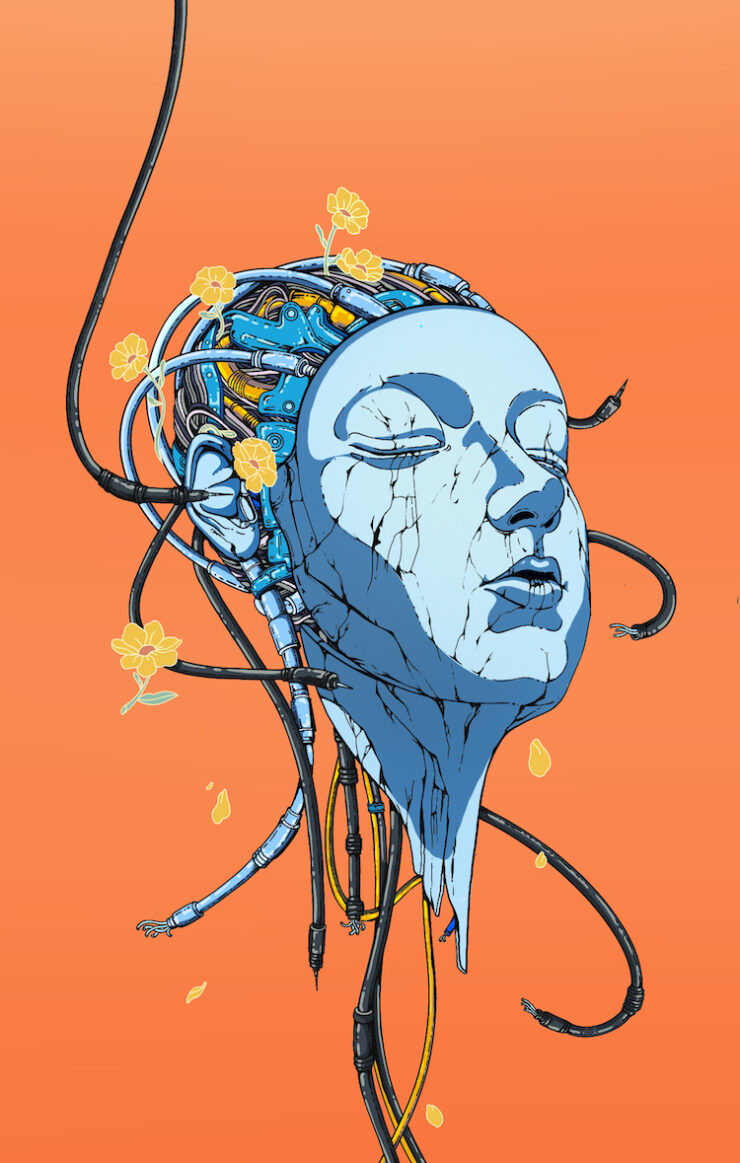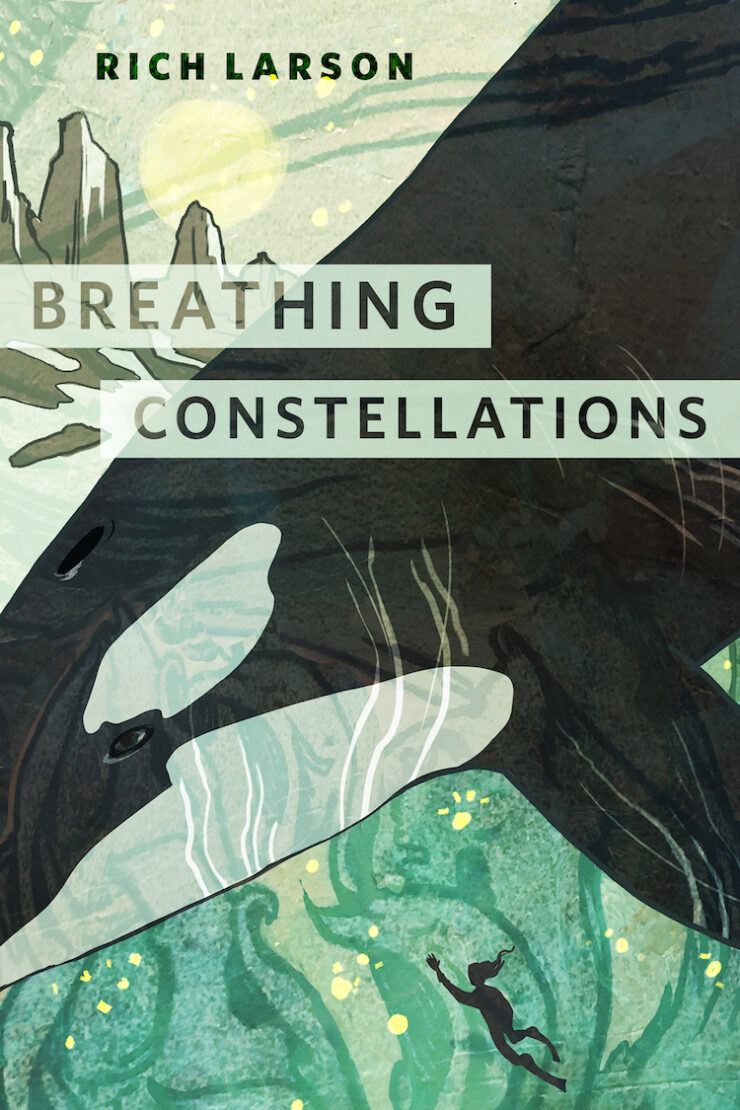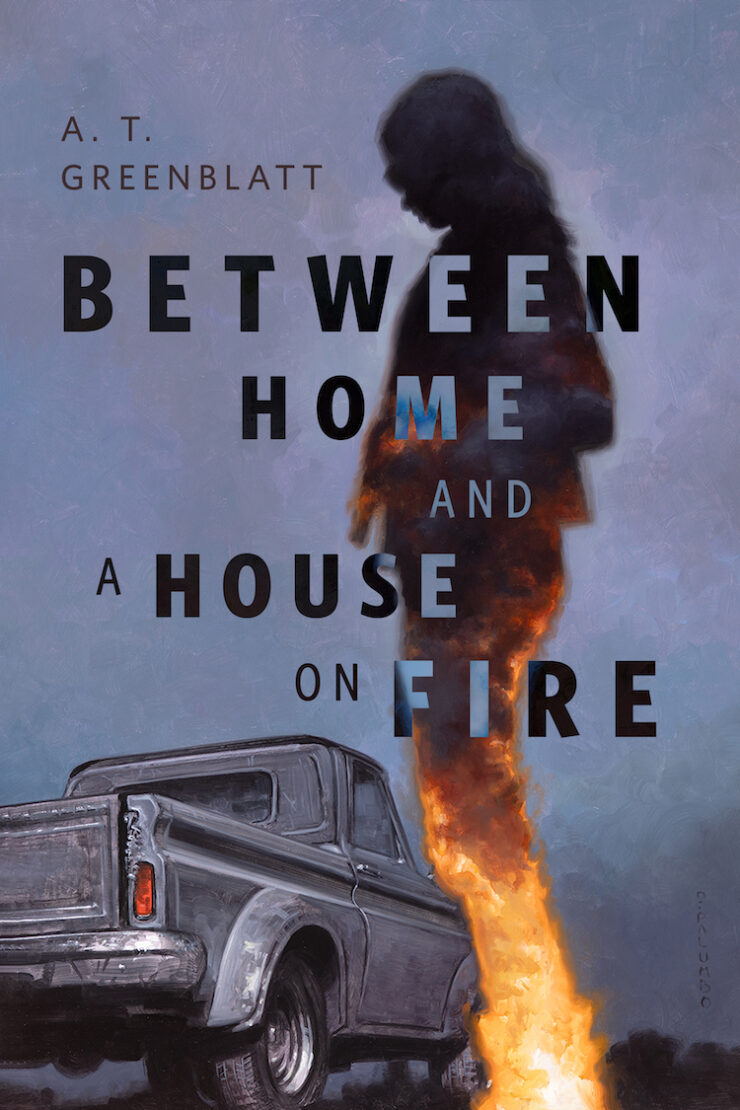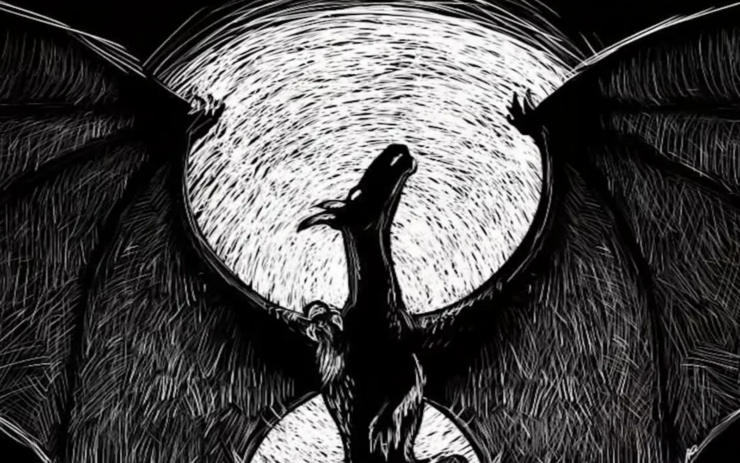Monster Chronicles’ format is a little different than some of the other cryptid documentary series. Each of the six episodes (plus a seventh that summarizes the rest) features supposed eyewitnesses telling their stories to the camera, with occasional questions from an interviewer. It’s remarkably effective.
The Jersey Devil episode’s interviewees are locals. Some of them are paranormal investigators, but they all live in the Pine Barrens. Some come from families that have lived there for generations. This is their folklore. These are the stories they grew up with, that go back for centuries.
Here we get the history as it’s remembered in the region. Mother Leeds had twelve children, and she cursed the thirteenth, saying it would have to be a devil. And so it was—born in a terrible storm, transforming after birth, and turning into a monster. It killed the midwife and flew up the chimney.
It terrorized the area for five years, we’re told, never attacking humans (except the midwife), but wreaking havoc among farmers’ livestock. At that point an unnamed preacher performed an exorcism which, he said, would keep the demon away for a hundred years.
Sure enough, in the 1840s, the Devil came back and rampaged through the livestock for twenty to thirty years. Apparently it took a break after that, but returned for a notorious week in 1909. It’s been seen off and on ever since, and fairly often in recent years. People who see it or hear it as often as not are reluctant to talk about it, but will share their experiences with writers at book signings and speakers at conferences. And, of course, interviewers for documentaries.
Paranormal investigator and storyteller Patricia Martinelli tells the tale of a celebrity sighting. After his brother Napoleon was finally defeated and his empire dismantled, Joseph Bonaparte retired to an estate in Bordentown, New Jersey. He was well liked in the area, and well known for his hospitality.
One day he went hunting in the woods, and tracked an odd series of hoofprints to a sudden end, as if the creature had taken wing and flown away. He wrote an account of the experience, which adds to the cachet of the story. When he reached the end of the tracks, he writes, he heard “a hissing sound like that of an alligator when it feels threatened” (which tells you something about his range of experience). He turns and sees “a creature like no other. It had a long neck, short arms, wings like a crane, the hooves of a horse, and the head of either a horse or a camel. It hissed at me again and flew away.” He shoots at it, but doesn’t appear to wound it.
He did not know about the Jersey Devil when he met it. Later when he told his friends about the encounter, they enlightened him as to what he had to have seen. “The devil of the woods,” they called it.
Bonaparte became obsessed with shooting the creature in order to mount it as a trophy. He hunted it for the rest of his life, and often claimed that he could hear “the rustle of its wings.” But he never saw it or shot it again. He’s still out there, we’re told, trying to get that trophy.
That seems to be an authentic sighting, but local legend has conflated a few other elements of folklore with it. Captain Kidd, the notorious pirate of the Jersey shore, supposedly buried treasure in the area. In each burial spot, he beheaded one of his men to guard the treasure for eternity. The headless ghost, the story goes, is seen walking the shore with the Jersey Devil.
Although the story of the Devil as a cursed child persists through the centuries, the legend began before the arrival of white colonizers. The Lenni Lenape told tales of a creature they called Popuessing, which means Land of the Dragon. Something lives in the pines, it seems, and it’s been there for a very long time.
Martinelli speculates that the original story was a cautionary tale to keep the children in line. The arrival of the colonists added new details: the hooves and head of a horse, the idea of a demon. It could be a misidentification—a deer, a bear, a crane.
There might be an additional element to the legend. Children with birth defects were considered to be the offspring of the Devil. Parents hid them, but might let them out at night, when travelers or hunters might come across them. There might be stories of the demonic child on the farm down the road, and those stories would add themselves to the rest.
I can confirm that a child who “wasn’t quite right” might be shut up in the attic or kept from interacting with people outside the immediate family. We never did know what was wrong with my great-aunt’s oldest son. She did not talk about him and we were not encouraged to ask. We’d see him lurking at the top of the stairs or running behind the barn. As far as I ever saw, he was normal enough looking. But if I’d met him in the woods at night, in the dark and primed by years of lore and legend, I might have seen something very different. And that was in the 1960s.
Whatever the Devil is, its legend shows no sign of dissipating. Accounts in the last century or so add different details to Bonaparte’s story. Witnesses never seem to see it clearly: it’s a shadow in the branches, a dark shape following their car down the road.
They swear they’re experienced hunters and campers and woodspeople, and they’ve never seen or heard anything like it. Sightings may be preceded by a growing fear, a sense of being watched. They dwell on the eyes, “so red, so deep red just looking at me,” and the sound it makes, either a blood-curdling scream or a sound like metal grating on metal. Much more horrifying than the alligator hiss Bonaparte heard.
Is it real? The episode lets the viewer decide. Witnesses are strongly affected by it—whether it’s an actual living creature or a demon or some sort of paranormal manifestation. Maybe it’s something in the land, the topography, the flora and fauna. Maybe it’s the persistence of belief, the power of story. You expect something to be out there, and if you’re lucky, or unlucky, it finds you. After that, witnesses declare, you’re never the same again.










